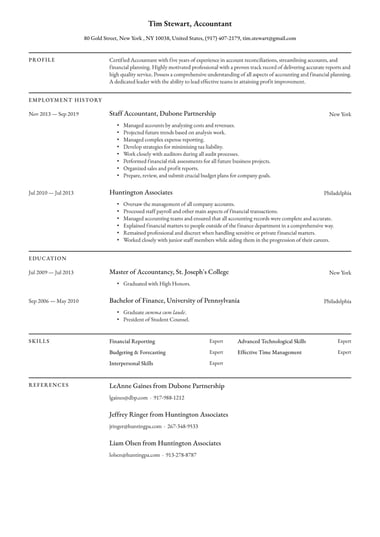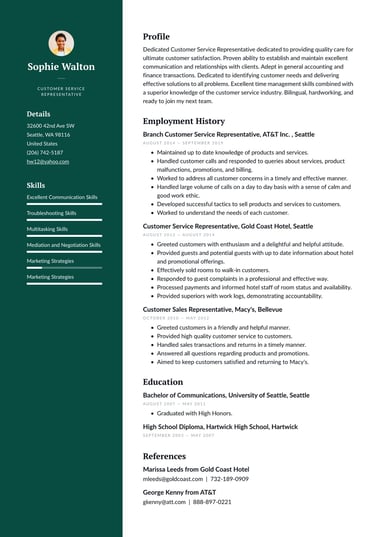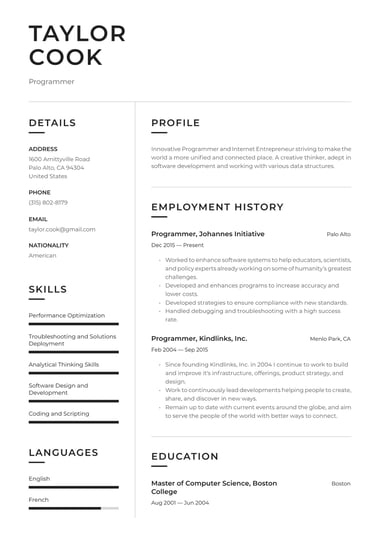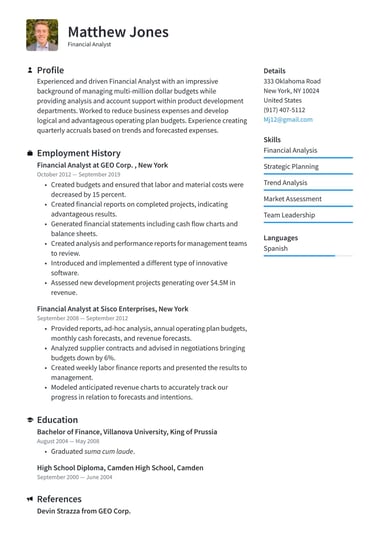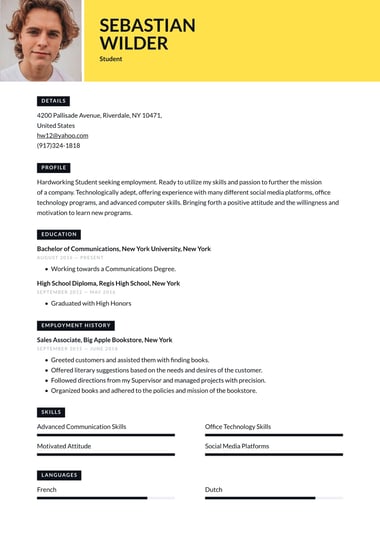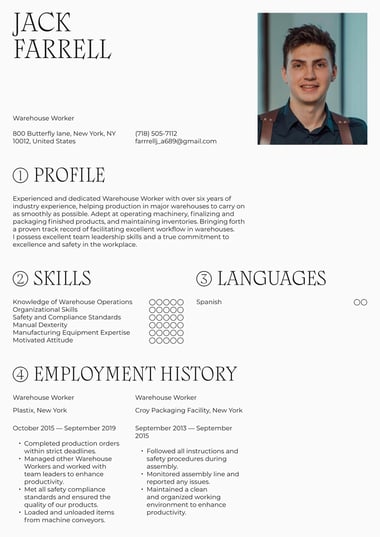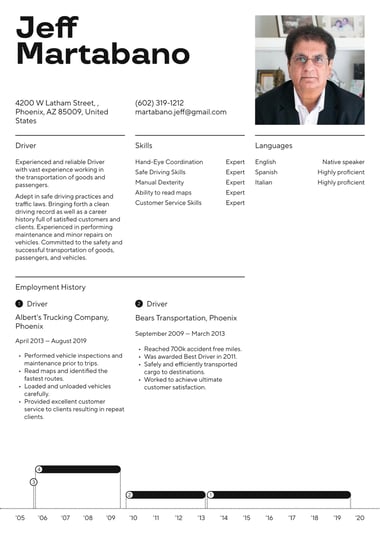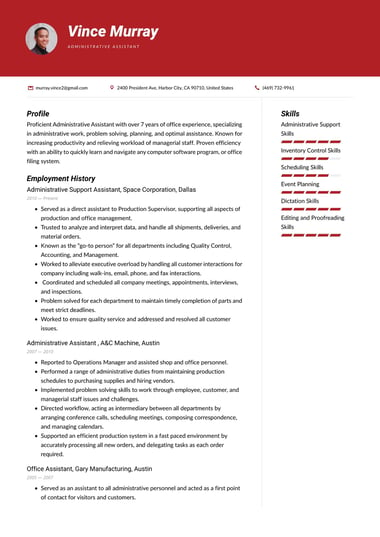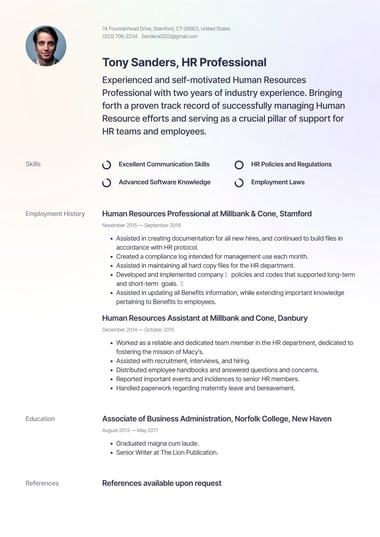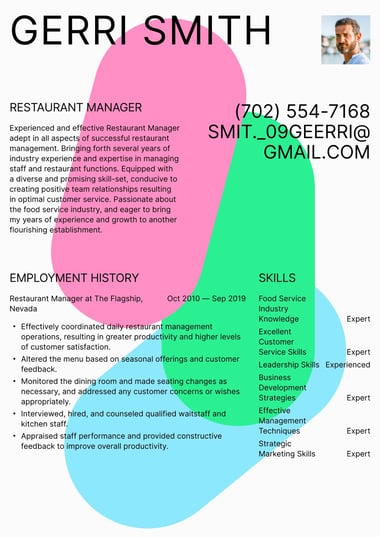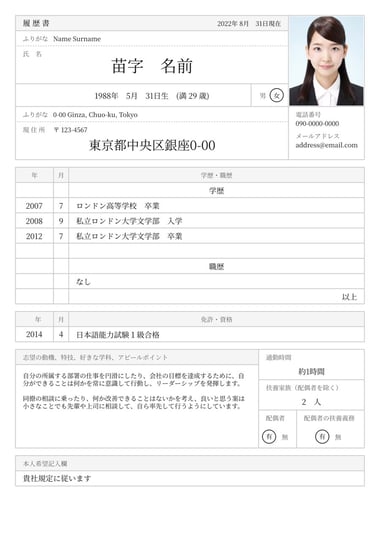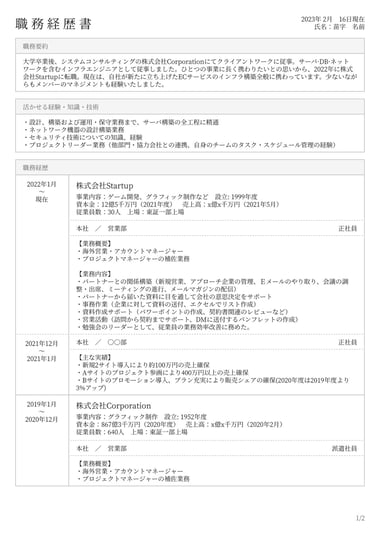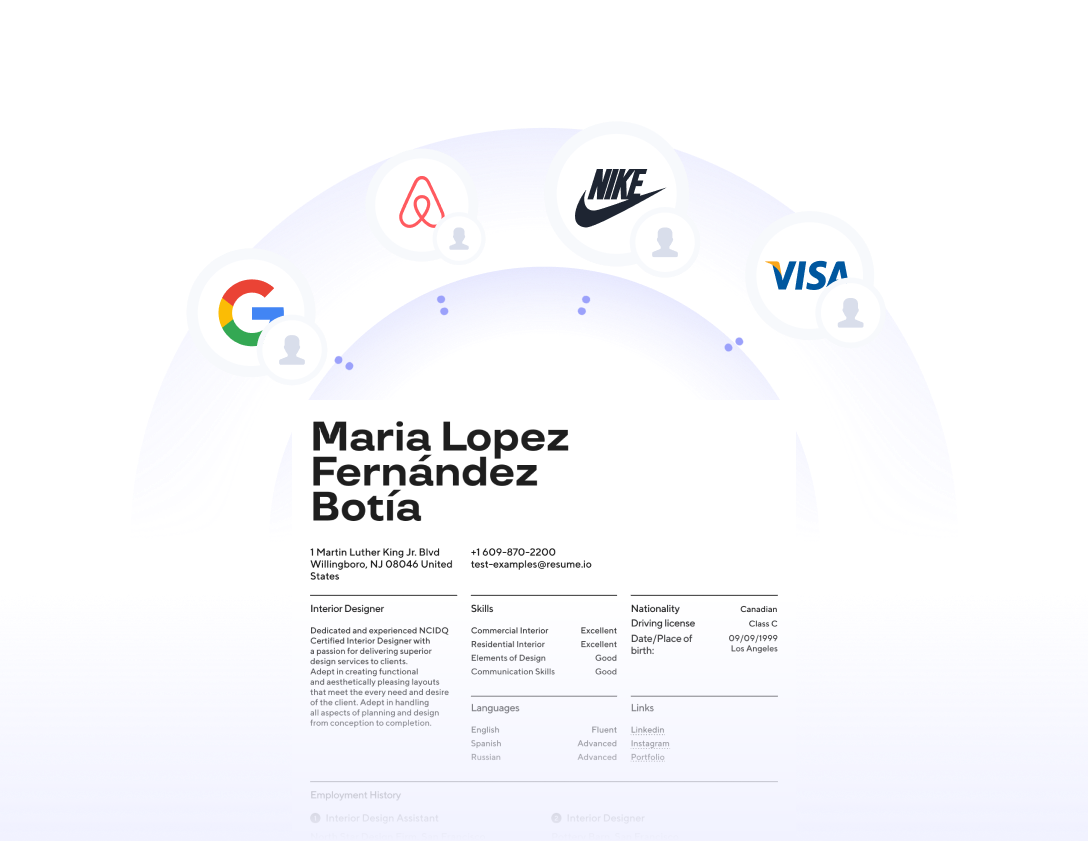Is it okay to use a two column resume?
A two-column resume format, which utilizes two separate columns on a single page, is absolutely a valid choice, but you do need to take a few factors into consideration before you commit, and all of these are important to consider before using a two column format for your resume.
Scenarios in which a two column resume might be appropriate include:
- You need space: if you have a lot of professional experience that you need to fit on one page, a two-column format can accommodate it more easily.
- You want it easy to read: a two column resume breaks information up into two distinct sections, making it eye catching and easier to scan
- You’re in a creative field: a two column resume is visually appealing, allowing you to include light graphics and mold your resume to align with your professional brand and sense of style.
Keep in mind, though, that two column resumes might be easy for a human to scan and parse information, but an ATS can have trouble reading it.
However, you might be able to circumvent this issue by ensuring that your two column resume has distinct section headers and is written using a standard font, such as Times or Georgia.
Pros and cons of a two-column resume
A two-column resume can be a great way to highlight and present your skills and experience effectively, but it does have a few drawbacks.
Pros
- An efficient use of space: a two column format allows you to include more information without making the document too long.
- Visually appealing layout: this format emphasizes key sections like skills, education, or contact information, making it easy for the hiring manager to locate.
- It demonstrates your creativity: this is useful for industries that value presentation and an eye for design, like a graphic designer.
- It stands out from the crowd: in a sea of one-column resumes, a two column has a good chance of grabbing a recruiter’s attention.
Cons
- Compatibility issues: two column resumes can be less compatible with some Applicant Tracking Systems (ATS).
- Possible format alterations or corruptions: two-columns might be harder to read on different devices or screen sizes or look different than you intended.
- Formatting can be challenging: two column resumes require careful formatting to ensure that both columns are balanced.
Job-specific example two-column resumes
Not sure how a 2 column resume might look? Here are some examples to inspire you.
Amsterdam template
Streamlined and easy to read, this elegant resume uses two-tone blocks to put your healthcare experience front and center.
Toronto template
Modern and clean, systems engineers can use this template to show off their skills with visually-appealing blocks of text.
Brussels template
This no-nonsense, clean layout is great for e-commerce professionals with reader-friendly, distinct sections and a touch of color.

